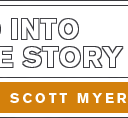Member-only story
Character Type: Femme Fatale
“There is a strong element of sexuality at work with the Femme Fatale and that cuts both ways as an narrative element: empowerment for the woman, weakness for the man.”
Those of you who have followed my blog for some time or taken courses with me through Screenwriting Master Class know how fascinated I am with character archetypes, specifically how there are five — Protagonist, Nemesis, Attractor, Mentor, Trickster — which recur in movies over and over and over.
Some might see archetypes as a sort of reductionist approach to writing when in my experience, it is precisely the opposite.
By working with these five Primary Character Archetypes, we can identify the core narrative function of every key character, then use that knowledge as a guide as we build them out in a limitless number of ways.
One approach is to use an extensive array of Character Types available to us. So this month, I am running a series in which we will explore 20 Character Types, and consider how writers can use them to create unique, compelling figures in our stories.
Today: Femme Fatale.
Although we may associate the Femme Fatale most closely with film noir, this character type has been in existence since ancient times, the “fatal woman” often portrayed as a seductress, even to the point of having some sort of mystical power as an enchantress. Indeed we find an example in the Gospel of Matthew (14:6–9):
But on Herod’s birthday, the daughter of Herodias (Salome) danced before them: and pleased Herod. Whereupon he promised with an oath, to give her whatsoever she would ask of him. But she being instructed before by her mother, said: Give me here in a dish the head of John the Baptist. And the king was struck sad: yet because of his oath, and for them that sat with him at table, he commanded it to be given. And he sent, and beheaded John in the prison.

Salome with the Head of John the Baptist (Caravaggio)
Obviously, there is a strong element of sexuality at work with the Femme Fatale and that cuts both ways as an narrative element: empowerment for the woman, weakness for the man. Witness the hold Phyllis Dietrichson (Barbara Stanwyck) has over the ultimately hapless Walter Neff (Fred MacMurray) in the…

